T-54/55 Tanks: Russia’s 70-Year-Old Tanks Go Back to War
March 25th, 2023
8 minute read
As we prepared Peter Suciu’s article about the T-54/T-55 series of tanks, news broke that Russia is currently moving large numbers of the tanks west from its eastern regions. The presumption is that its invasion of Ukraine has so bled the Russian army that it needs these severely outdated tanks to continue its military operations. Whether that is true remains to be seen. Whatever the case, the Soviet-era tanks played a significant role in the 20th century and are worthy of study.
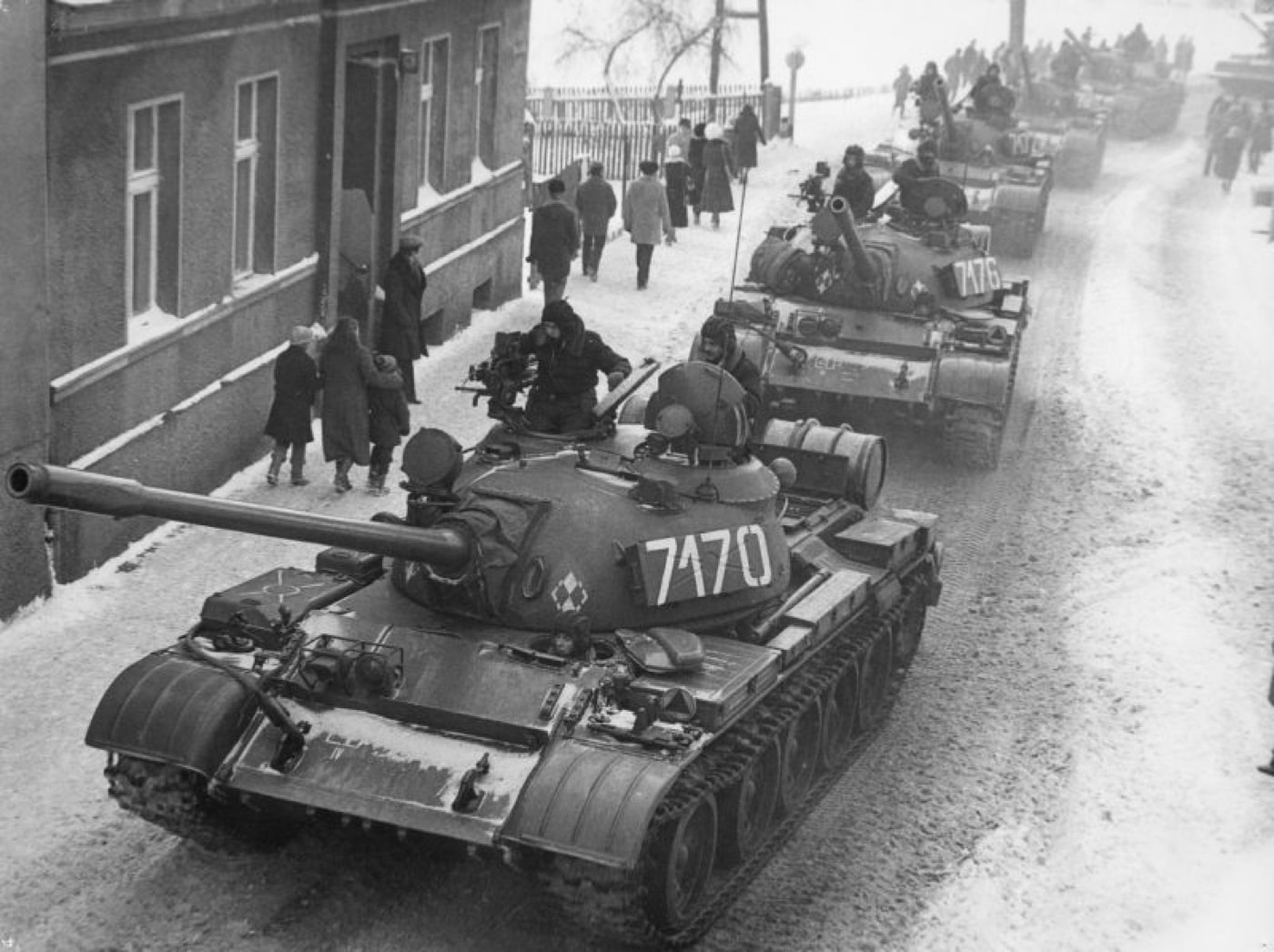
When the Soviet Union found something that worked well, it produced a lot of it. That helps explain why the Ilyushin Il-2 was the most-produced fighter plane of all time with some 36,183 built. By contrast, the British only manufactured 22,685 Supermarine Spitfire/Seafire fighters. Likewise, the Soviet-designed AK-47 remains the most prolific firearm, with more than 100 million in all variants manufactured in total.

In terms of tanks, it might be easy to assume that the T-34 earns the top title. That would be wrong, however. While a total of 84,000 of the Soviet medium tanks were built — with a third produced after the Second World War — there were actually more than 100,000 T-54/55 main battle tanks (MBTs) manufactured during the Cold War.

It’s a record unlikely to be broken in the future and explains why it is now among the oldest tanks still in service in parts of the world.
Origins of the T-54
The Soviet Union’s T-34 had proven to be among the very best tanks introduced during World War II, and its design was so innovative that it largely caught the Germans off-guard in 1941 when the Nazis launched the largest military invasion in history. The Red Army’s medium tank also served as the basis for future designs, leading to the T-44 — which became the first Soviet tank to mount the engine transversely, reducing the overall length and thus saving weight. Despite its innovations, the T-44 was essentially an interim design.
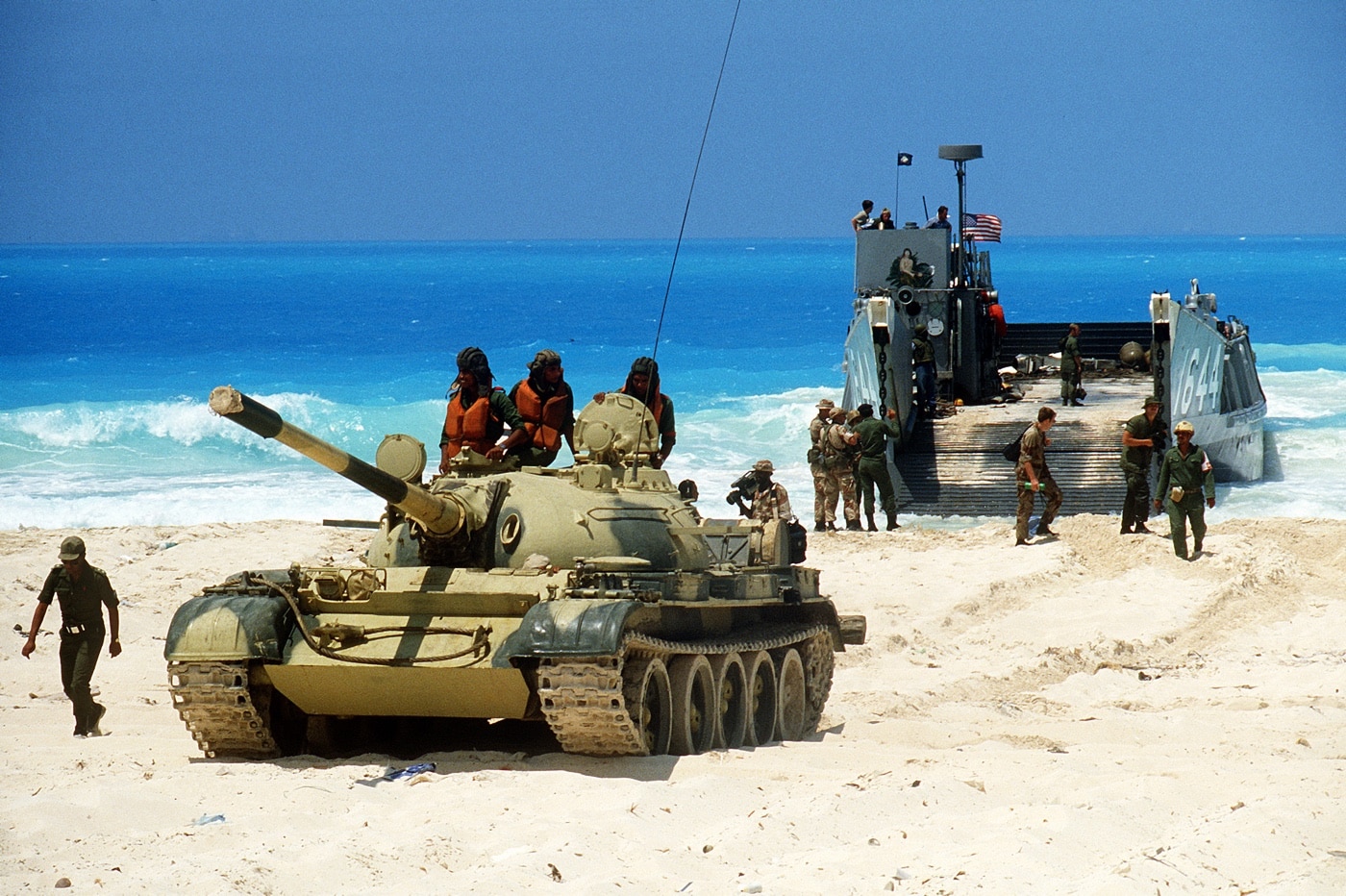
But it led the way for what was to come next.
The totally new T-54 first appeared in 1949, and it was arguably among the best of the early Cold War MBTs. It was well-armed with a D-10T 100mm main gun, which fired APHE (armor piercing high explosive), HEAT (high explosive anti-tank) and HE (high explosive) rounds, while secondary armament consisted of multiple SGMT 7.62mm machine guns.

It also featured armor that was up to 150mm (5.9″) thick, and its turret was virtually hemispherical in shape, which helped deflect enemy rounds — but was cramped by Western standards.
Clearly, it was largely a step forward in tank design for the post-war era, but the T-54 was also subject to a constant process of modification and upgrades.
Enter the T-55
Though not technically a different tank design, the numerous improvements were enough to warrant the new designation T-55. It was first observed in the West in 1960, and those enhancements were quickly noted. It included a more powerful engine, which provided greater agility, but also considerable endurance. Powered by a 12-cylinder four-stroke water-cooled diesel engine that developed 630hp at 2,000 rpm, the T-55 had a top road speed of 31 mph. With additional fuel tanks, it had a range of 340 miles — greater than many Western tanks of the era.
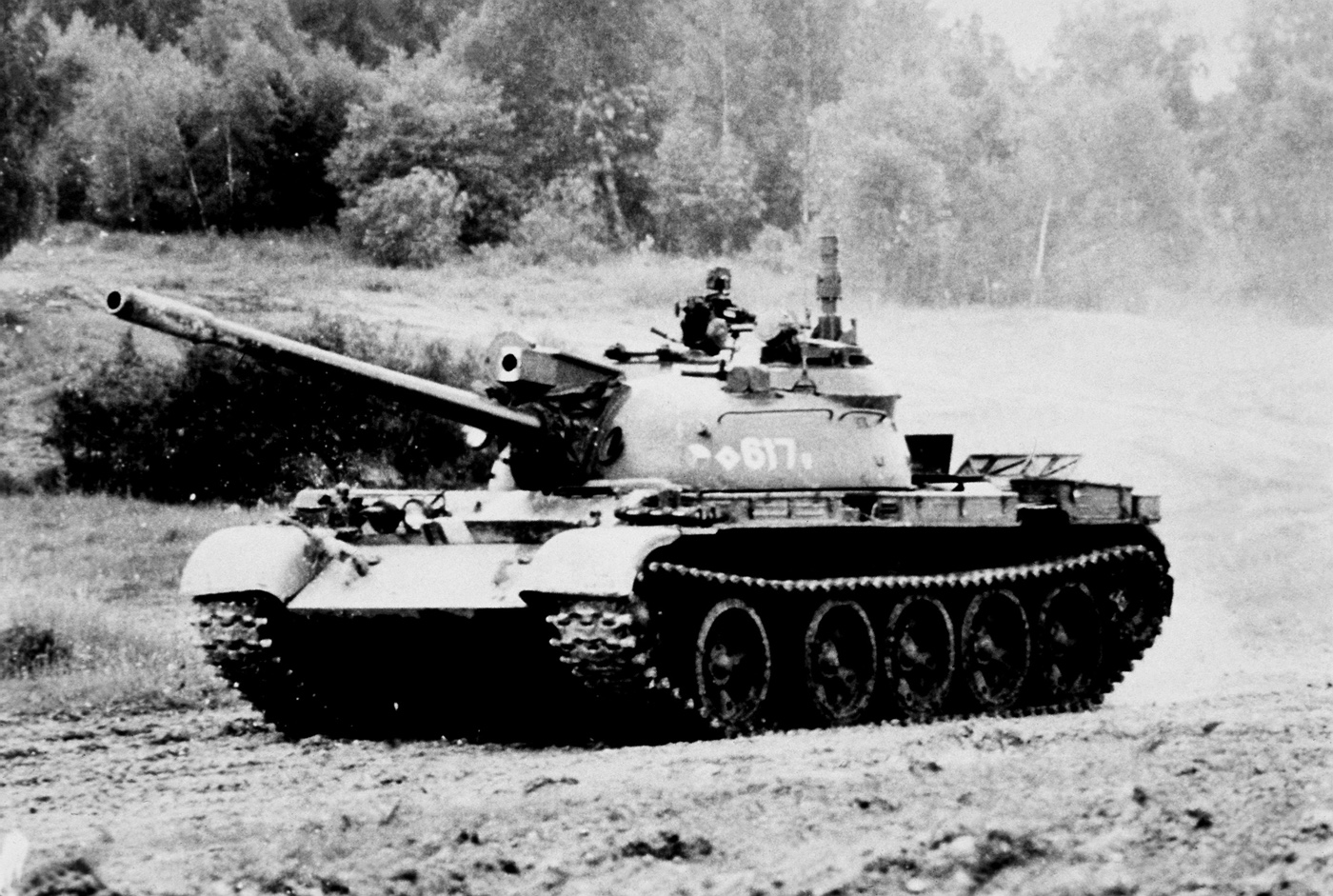
It employed the same 100mm main gun as the T-54 but was equipped with full stabilization, while the magazines were increased from 34 to 44 rounds. The first T-55 production model was fitted with the bow-mounted machine gun employed in the T-54, but this was deleted from the subsequent variants.
The T-55, with its hard-hitting armament and powerful engine, was certainly designed to be part of any vanguard into Western Europe should the Cold War have turned hot.

The T-54/55 became the frontline tank of the Warsaw Pact throughout the 1960s, and it was produced in factories in the Soviet Union, Czechoslovakia and Poland — while China manufactured a licensed version as the Type 59. Soviet production ran from 1946 to 1981, while Poland produced the tank from 1956 to 1979. Czechoslovakia’s manufacturing run lasted from 1957 to 1983. In addition, some 7,000 Type 59s were built between 1959 and 1985.
T-55 Versus the U.S. Patton Tank
Whereas the T-54 was a response to the M46 and M47 Patton tanks, the T-55 was meant to ensure the U.S. didn’t gain an edge.
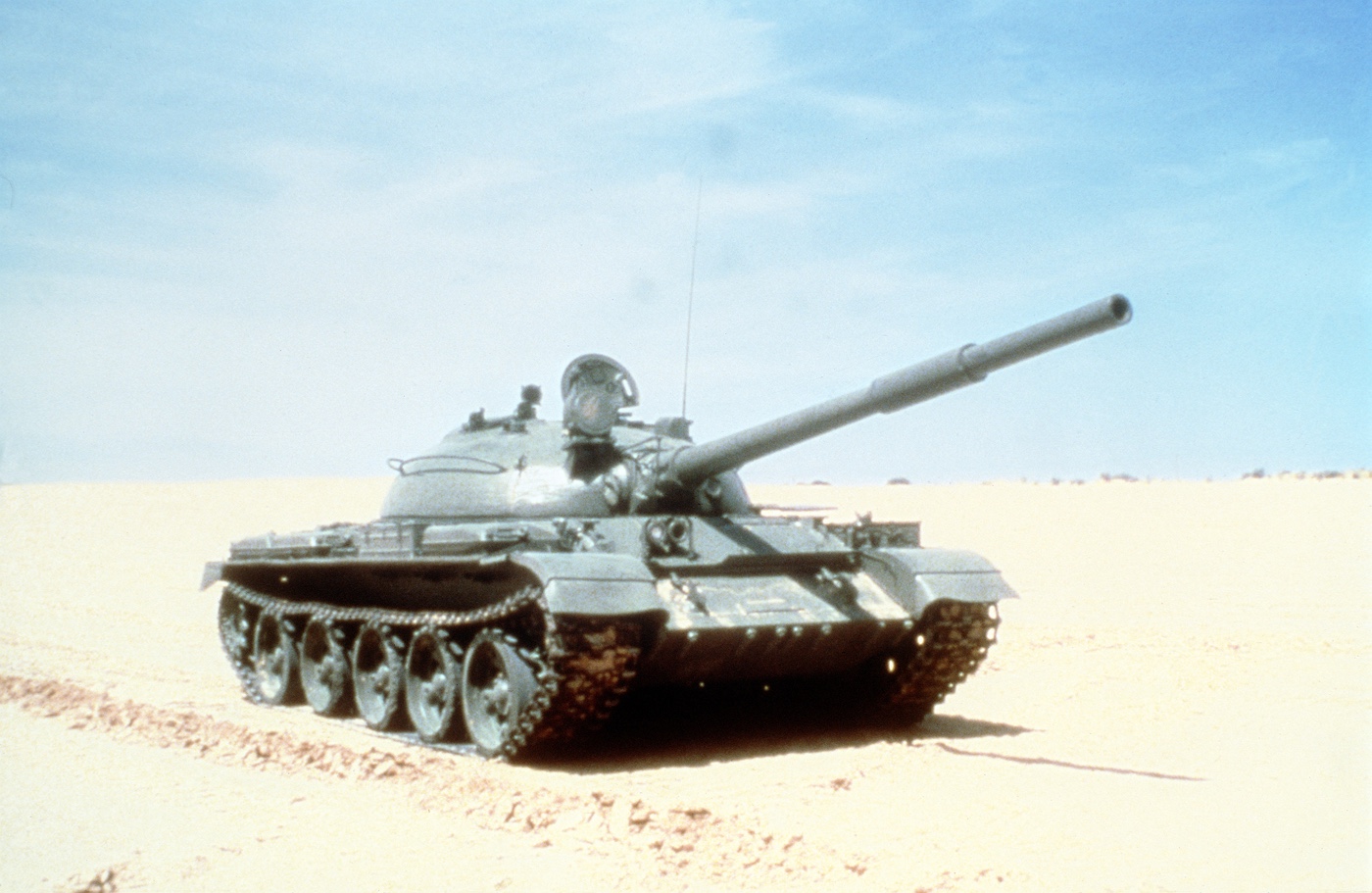
“The Soviet Union developed the T-55 to counter the United States’ M48 main battle tank,” explained tank historian John Adams-Graf, editor of the Military Vehicle Preservation Society’s History in Motion. “Over the history of the two vehicles, the match-up ping-ponged as to which would prove dominant in combat.”
The M48 and the improved T-55 were considered evenly matched.
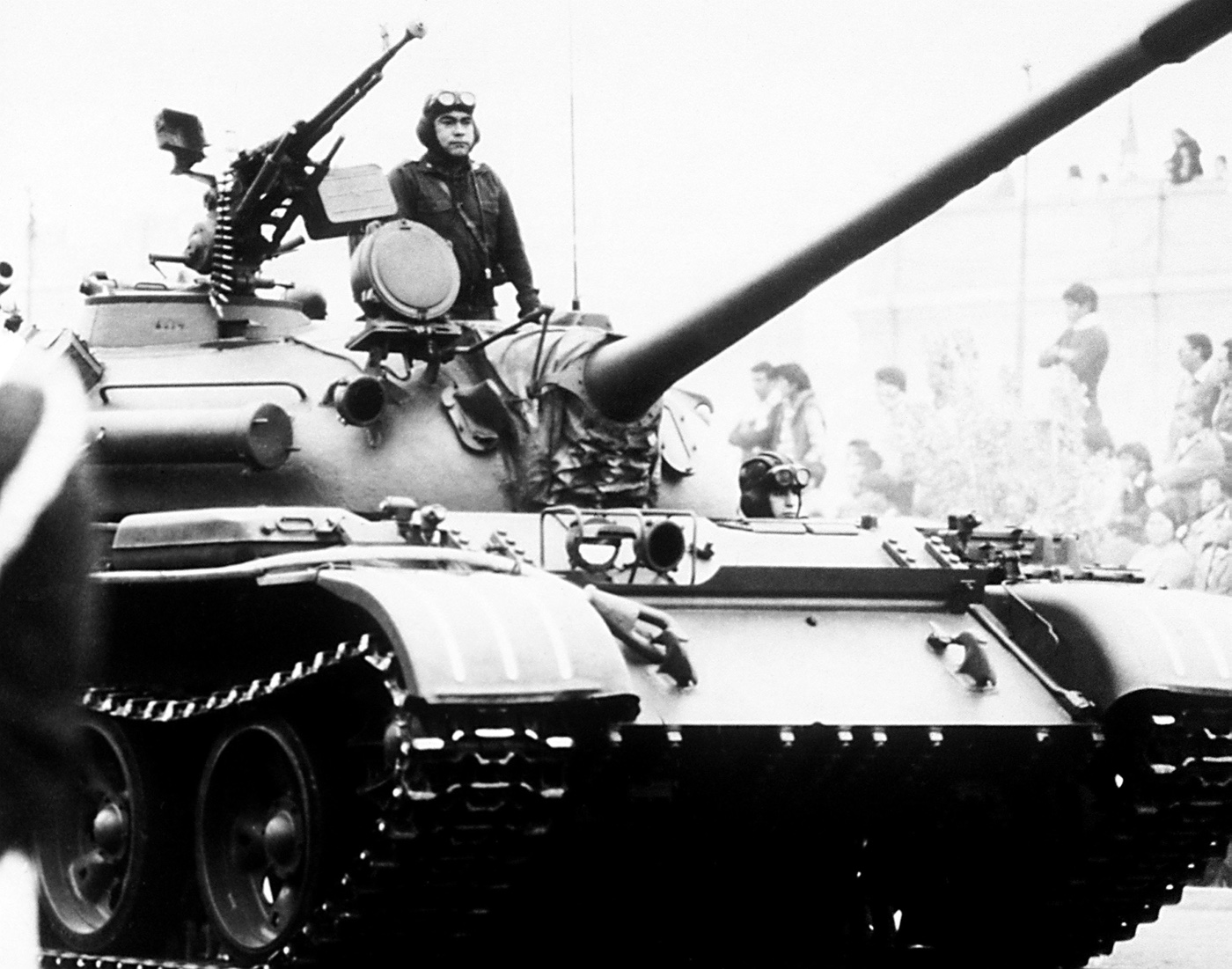
“Though the firing apparatus on the M48 was superior to that of the T-54, the latter’s low profile permitted an easier hull-down position. In a closely matched tank battle, the vehicle with the lowest profile was likely to prevail,” explained Adams-Graf. “Ultimately, upgrades to the M48 — including a 105mm rifled gun capable of firing armor-piercing discarding sabot (APDS) projectiles — established dominance over the Soviet T-55, which, in turn, led to the development of the T-62.”
Combat Record
Despite the fact that it was designed to counter Western tanks, notably, the U.S. Army’s Patton series tanks — including the M47 and M48, the T-54/55 was actually first employed in combat during the Hungarian Revolution of 1956 — the same war where Western observers first saw the AK-47 assault rifle, which until that point had largely been a mystery.

It was in the Six-Day War in 1967 — fought between the State of Israel and a coalition of Arab states including Egypt, Jordan and Syria — that the two tanks actually went head-to-head. Israel, with its M48 medium tanks, launched a surprise attack, occupying the whole of the Sinai Peninsula and destroying hundreds of Egyptian T-54/55 tanks.

The Soviet MBTs were subsequently used during the Warsaw Pact invasion of Czechoslovakia in 1968, to put down another anti-Soviet uprising. Three years later, in the Indo-Pakistani War of 1971, the T-55 was in service with India while Pakistan employed the Chinese Type 59 — possibly the first time the tanks faced off.

In the Yom Kippur War of 1973, Egypt and Syria again employed the T-55, while large numbers of the Soviet-design tanks were used by both sides in the Iran-Iraq War in the 1980s, and the aging tanks were employed in a secondary role in the 1991 Gulf War and 2003-2011 Iraq War.
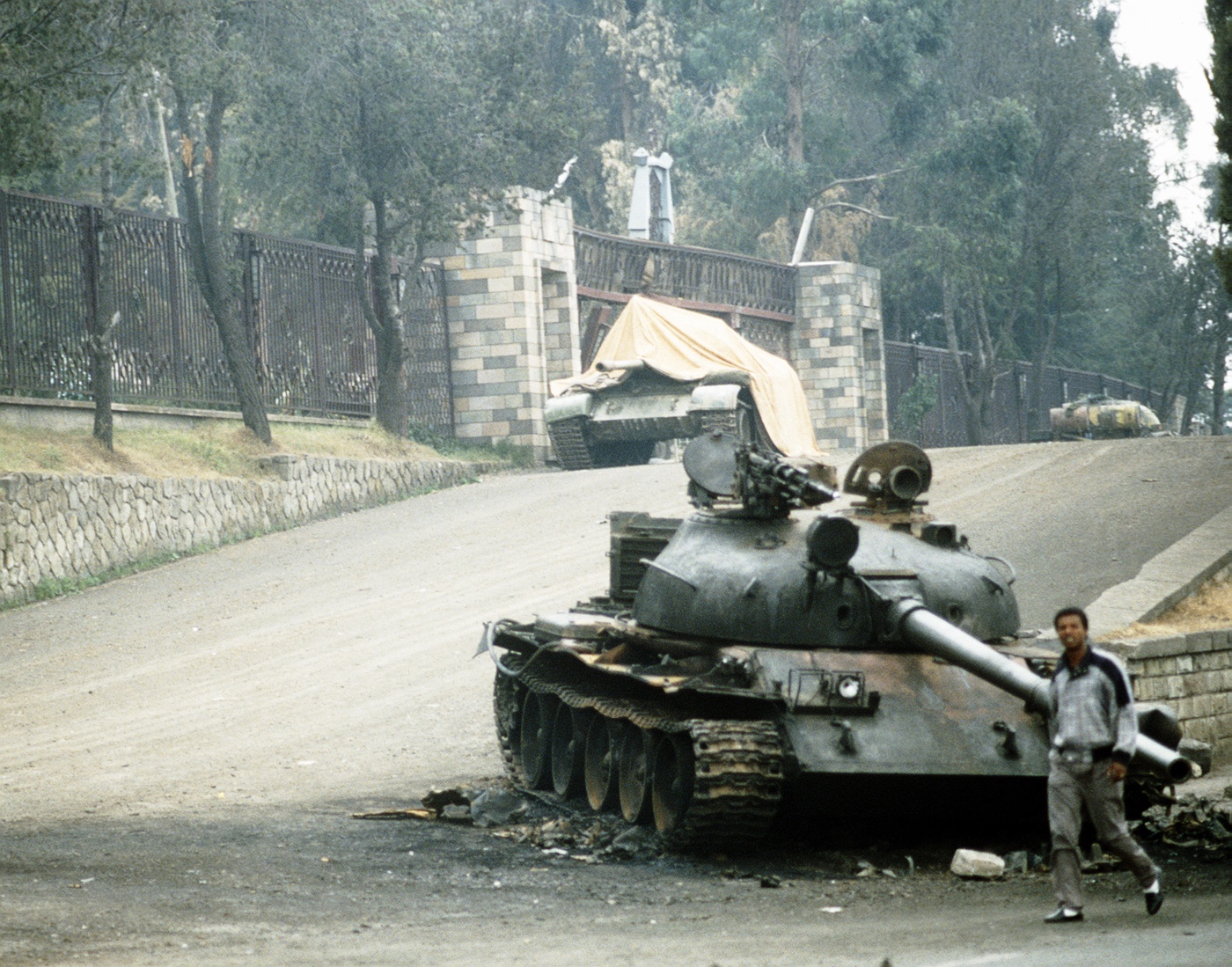
Despite being far older than the crews manning the tanks today, antiquated T-54/55 MBTs continue to be used around the globe — including in Afghanistan, Libya, Sudan, Syria and Yemen. Though the Russian Army hasn’t yet called any T-54/55s back into service, a number were reportedly used by the Ukrainian Army in the early stages of Russia’s unprovoked and unwarranted invasion. [Ed. note: As this goes to press, reports indicate that Russia is moving T-54 and T-55 tanks to the western side of its country, perhaps in preparation for combat in Ukraine.]
Not the Best MBT
Though it has the distinction of being the most produced MBT of all time, from the Western perspective, the T-54/55 had numerous shortcomings, including main fuel tanks outside the armor envelope, no turret basket and the lack of a collective NBC (nuclear, biological, chemical) system, which meant that the individual crew members had to wear NBC suits. Yet, it was sufficiently good enough — and more importantly, was available in vast numbers that had war broken out, the Soviet Union had plenty to send to the front lines.

As such a massive number of T-54/55 tanks were produced during the Cold War, it is a fairly common tank in private collections today. Vast numbers were exported after the dissolution of the Soviet Union, while those in the arsenals of former Warsaw Pact nations were also sold off as “military surplus” — with the weapons deactivated, of course.
A particularly nice T-54/55 in running condition was sold in the UK in recent years for around £30,000 ($36,200), less than the cost of a pre-owned Ford F-150. Of course, keeping it running and having the land to actually have “fun” with the MBT is another issue.
Editor’s Note: Please be sure to check out The Armory Life Forum, where you can comment about our daily articles, as well as just talk guns and gear. Click the “Go To Forum Thread” link below to jump in and discuss this article and much more!
Join the Discussion
Continue Reading
Did you enjoy this article?

 96
96






